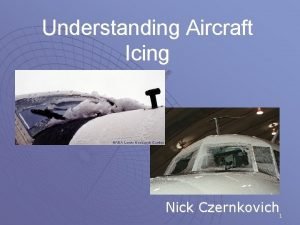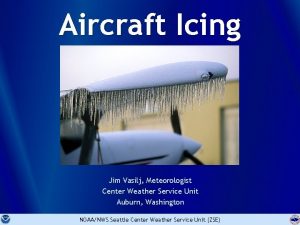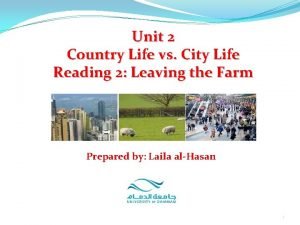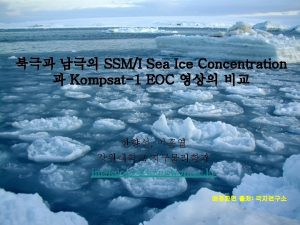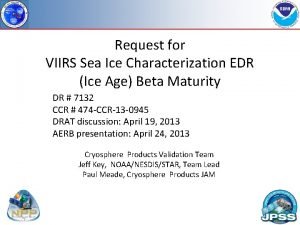Life ice Lifeinin ice Life in ice Life






- Slides: 6

Life ice? Lifeinin ice Life in ice?

Life ice? Lifeinin ice • The portion of the Earth’s surface covered in ice is known as the cryosphere. The cryosphere • This includes ice caps, ice sheets, glaciers and sea ice. • It also includes areas with permanently frozen ground (permafrost). • Snow cover is part of the cryosphere, but is seasonal not permanent. • Snow can cover up to 50 million km 2 of land in the northern hemisphere winter. Seasonal snow cover in Iceland

Life ice? Lifeinin ice The size of the cryosphere • Several parts of the cryosphere vary markedly by season. Cryosphere component Million km 2 • This includes ice on rivers, lakes and the sea. Snow cover 47– 4 (winter to summer) • Sea-ice cover in the northern hemisphere is more variable than in the southern hemisphere. Ice caps and glaciers 1 • Snow and ice extent varies because of the timing of seasons in the northern versus the southern hemisphere Ice sheets 16 Permafrost 25 River and lake ice Sea ice 1 28– 19 (winter to summer)

Life ice? Lifeinin ice Extreme environments • Traditionally, the cryosphere has been grouped with other extreme areas such as hyper-arid deserts and areas of bare rock (see table). • These environments were seen as essentially unproductive in terms of biological productivity. • Notice that in the table ‘Extreme desert, rock, sand, ice’ is the third largest environment by area. • However, it is the least productive in terms of NPP. Extent and productivity of global biomes

Life ice? Lifeinin ice Ice life-forms • Recent research suggests there is more life in the cryosphere than once thought. • Most of this life is very simple, consisting of algae. • This includes Chlamydomonas nivalis which looks red/pink and creates ‘watermelon snow’ and Melosira arctica which is a type of algae that lives on the underside of floating sea ice. • There are, rarely, more complex life-forms that live in ice such as Alaskan ice worms Mesenchytraeus solifugus

Life ice? Lifeinin ice Food webs • The algae that live in ice form the basis of food webs. • The algae photosynthesise, and so produce carbohydrate. • Living and dead algae can be released from ice during melting. • This means glacial meltwater in rivers, and ice melt from sea ice, contains food for other organisms. • This, simple life forms on ice can be an important component of food webs.
